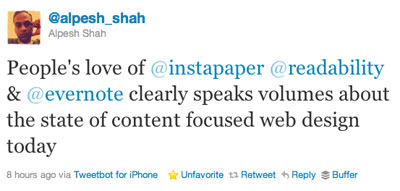I’ve written about Dhanji R. Prasanna excellent post on Google Wave and working at big companies before, but I wanted to come back to something he said that I just can’t get out of my head. In one section he talks about a topic I care about very much – what motivates people to do great work. I really like his perspective on the importance of incremental progress:
[As] a programmer you must have a series of wins, every single day. It is the Deus Ex Machina of hacker success. It is what makes you eager for the next feature, and the next after that. And a large team is poison to small wins. The nature of large teams is such that even when you do have wins, they come after long, tiresome and disproportionately many hurdles. And this takes all the wind out of them. Often when I shipped a feature it felt more like relief than euphoria.
I like the analogy of these small wins as Deus Ex Machina:
[It means] “God out of the machine”; a seemingly inextricable problem is suddenly and abruptly solved with the contrived and unexpected intervention of some new event, character, ability, or object.
It’s so important for large teams to celebrate those wins with the people they work with every day – and to call out the “characters” responsible for accomplishing Deus Ex Machina. It is hard to get that right in large organizations because the invisibility of individual team members and the pressures to move on to The Next Thing aren’t naturally conducive to this type of behavior. But it’s possible if you work at it.
Whether you keep some champagne in a fridge, send out company-wide emails thanking people personally, or ring a bell every time code gets deployed (ok, that last one is lame, sorry), being in a large organization isn’t an excuse for acting like a faceless corporation.
